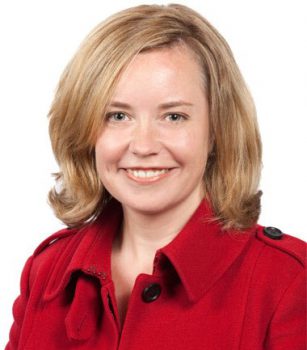
A NSW Productivity Commission review of infrastructure contributions has recommended linking local government rates to population.

Commissioner Peter Achterstraat’s final report, handed down last Thursday, lays out a roadmap for what the state government says is the biggest shake-up of the contributions regime in 30 years.
One of the key recommendations is allowing the local government rate peg to reflect population growth, enabling councils’ income to increase along with population.
Mr Achterstraat says his review has found the current infrastructure contributions system isn’t helping councils provide the infrastructure needed to support development.
“Previous attempts at reform have resulted in a system that is overly complex, unpredictable, and imposes undue administration costs,” he says.
The report makes 29 recommendations, including reducing the costs and complexity of section 7.11 contribution plans and increasing section 7.12 levies.
Growth disincentive
Mr Achterstraat says the average per capita local government rates of $591 in NSW are below the average for all other states, which is $835.
He says the peg, currently set by IPART at 2 per cent for 2021-22, creates a strong disincentive for councils to accept growth without either reducing infrastructure or recovering the cost from infrastructure contributions.
He notes that Office of Local Government is looking at changes to the calculation of the rate peg to align rating income growth with population growth, something flagged by local government minister Shelley Hancock recently at the LGNSW annual conference.

“Councils’ maximum rate revenue from this change is estimated to increase by an additional 8.9 per cent, or $18.4 billion over 20 years,” he says.
“While most of this will go to high growth councils, lower growth councils are also expected to be better off.”
LGNSW says the report deals another blow to the “antiquated” rate peg.
“The Productivity Commission is just the latest to join LGNSW and a wide range of bodies disturbed at the choke-hold this practice has on our standard of living,” president Linda Scott said.
$12 billion of benefits
Mr Achterstraad also recommends that once the rate peg has been reformed, non-development contingent works should be removed from the section 7.11 essential works list, and IPART reviews of s7.11 plans should be limited.
He also recommends increasing the maximum rate for section 7.12 residential development levies to 3 per cent.
“Increasing the maximum levy to 3 per cent for residential development would better balance the benefit of a simple section 7.12 levy against the desirability of councils developing section 7.11 plans for areas of high infrastructure need,” he says.
The report recommends keeping the maximum levy for non-residential development at 1 per cent.
Mr Achterstraadt says the use of planning agreements for value capture on height and floor space increases should be curtailed.
“Instead, planning agreements should only recover development-contingent costs of ‘out-of-sequence’ development proposals not identified in strategic plans,” he says.
The report has been welcomed by planning minister Rob Stokes, who commissioned the review to remove uncertainty about contributions and unlock new housing supply.
“If the changes in this new report are implemented, these barriers will be removed and development will be coordinated with the right infrastructure,” he said.
The Commission says changes to the infrastructure system could unlock up to $12 billion of productivity benefits over the next 20 years.
The government will prepare a formal response to the report’s 29 recommendations and develop a roadmap for implementation by 2021.
Comment below to have your say on this story.
If you have a news story or tip-off, get in touch at editorial@governmentnews.com.au.
Sign up to the Government News newsletter
2 thoughts on “Report backs population-linked rate peg”
Leave a comment:
Most read
Scathing report finds little has changed at PwC
Qld council welcomes progress on massive battery system
Inquiry to consider how federal govt can address councils’ sustainability issues
‘Local’ procurement turns out not to be so local, committee hears
Another report finds local government falling down on cyber security
How convenient, the NSW Productivity Commission has come up with a way for the rest of us to should the cost of stuffing more people into Sydney. The Greater Sydney Commission has singled out the Randwick municipality for greatly increasing housing numbers. As a result, our rates have skyrocketed more than 30% since 2014. IPART noted that the last hike in 2019 was to fund the cost of the growing number of multi-occupancy dwellings. Because of the way council rates are levied, such dwellings, notably those in really big complexes do not carry their own weight. It’s left to the rest of us in smaller developments to carry the burden. Only public servants with an annual 2.5% wage increase could come up with such financial burden shifting.
Lost amid the report is section 6.6
Open Space. Apparently Its a horrendous burden that developers seem to avoid!
The mandated 2.83 hectares / 1000 people regardless of High density and Low density developments. Interesting graph and comments in the report all seem to ignore the importance of open space to the community. Covid pandemic has highlighted the massive need for Local parks and connective inter block walkways so that active and passive recreation can occur.
I not sure that recommendation 6.7 is actually going to help anyone other than developers avoid Open space provision and contributions for those infill developments that are not Greenfield sites! Perhaps the much touted Open Spaces and Greener Sydney Test to prove this is not a shallow, escape for developer contributions.